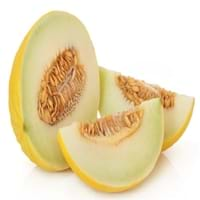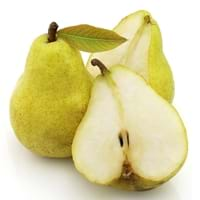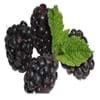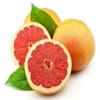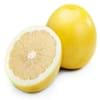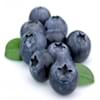Health Benefits
Body hydration, Cancer prevention, Gout treatment, Heart care, Treatment of skin Diseases
Arthritis prevention, Cancer prevention, Gout treatment, Heart care
General Benefits
Body hydration, Controls blood pressure, Digestive aid, Eye care, Helps in weight loss, Improves eye vision, Maintains healthy cholesterol level, Strengthens bones
Anti-inflammatory properties, Boosts immune system, Controls blood pressure, Controls blood sugar levels, Cures fever, Digestive aid, Sore throat treatment
Skin Benefits
Anti-aging benefits, Brightens and lightens complexion, Hydrates skin, Reduces wrinkles, Treatment of dark spots
Reduces wrinkles, Treatment of acne
Hair Benefits
Prevents hair loss, Promotes longer and healthier hair, Protects hair
Promotes longer and healthier hair, Shiny hair
Allergy Symptoms
Abdominal cramps, Breathing difficulty, Coughing, Diarrhea, Hives, Hoarseness, Itching in eyes, Itching of mouth, Itching sensation in throat, Nasal congestion, Nausea, Skin rash, Wheezing
Anaphylaxis, Digestive Problems, Itching, Skin Rashes, Swelling
Side Effects
Allergic reaction
Allergic reaction
Best Time to Eat
As a snack in the late afternoon, Don't consume at night and before bed, Eat the fresh ones, avoid mixing with any other foods, don't eat after meal., Morning time (before lunch)
As a snack in the late afternoon, Don't consume at night and before bed, Eat the fresh ones, avoid mixing with any other foods, don't eat after meal., Morning time (before lunch)
Vitamin B5 (Pantothenic Acid)
Vitamin C (Ascorbic Acid)
Vitamin K (Phyllochinone)
Phytosterol
Not Available
Calories in Fresh Fruit with Peel
Not Available
Calories in Fresh Fruit without Peel
Not Available
Calories in Frozen Form
Not Available
Calories in Dried Form
Not Available
Calories in Canned Form
Not Available
Not Available
Season
All seasons
Autumn, Summer, Winter
Varieties
Green Flesh, Yellow Rind and Orange Flesh
Green Anjou, Red Anjou, Bartlett, Red Bartlett, Bosc, Comice, Concorde, Forelle, Seckel and Starkrimson
Color
Green, Yellow
Yellow
Inside Color
Light Green
White
Taste
Sweet
Crunchy, Sweet
Origin
France
China, Japan
Grows on
Not Available
Trees
Soil Type
Sandy loam, Well-drained
Clayey, Loamy, Sandy
Climatic Conditions
Warm
Cold, Hot, Without frosts
Facts about
- The average weight of honeydew melon is 6 pounds.
- 90% of a honeydew is water.
- In middle east countries, dried and roasted honeydew seeds are consumed as snacks.
- Honeydew melons can be 15-22 mm long.
- The first pear tree was planted in North America in 1620.
- The Chinese considered the pear fruit to be a symbol of immortality.
- This fruit was used as a natural remedy against nausea in ancient Greece.
Other Countries
Brazil, Egypt, India, Iran, Mexico, Morocco, Spain, Turkey, United States of America
Argentina, Belgium, India, Italy, Japan, South Africa, Spain, Turkey, United States of America
Top Importer
Not Available
Europe
Top Exporter
Not Available
China
Botanical Name
Cucumis melo
Pyrus communis
Synonym
Not Available
Not Available
Subkingdom
Tracheobionta
Tracheobionta
Division
Magnoliophyta
Magnoliophyta
Class
Magnoliopsida
Magnoliopsida
Subclass
Dillenhidae
Rosidae
Order
Cucurbitales
Rosales
Family
Cucurbitaceae
Rosaceae
Species
C. melo
P. communis
Difference Between Honeydew and Pear
We might think that Honeydew and Pear are similar with respect to nutritional value and health benefits. But the nutrient content of both fruits is different. Honeydew and Pear Facts such as their taste, shape, color, and size are also distinct. The difference between Honeydew and Pear is explained here.
The amount of calories in 100 gm of fresh Honeydew and Pear with peel is Not Available and 57.00 kcal and the amount of calories without peel is 36.00 kcal and Not Available respectively. Thus, Honeydew and Pear belong to Low Calorie Fruits and Low Calorie Fruits category.These fruits might or might not differ with respect to their scientific classification. The order of Honeydew and Pear is Cucurbitales and Rosales respectively. Honeydew belongs to Cucurbitaceae family and Pear belongs to Rosaceae family. Honeydew belongs to Cucumis genus of C. melo species and Pear belongs to Pyrus genus of P. communis species. Beings plants, both fruits belong to Plantae Kingdom.
